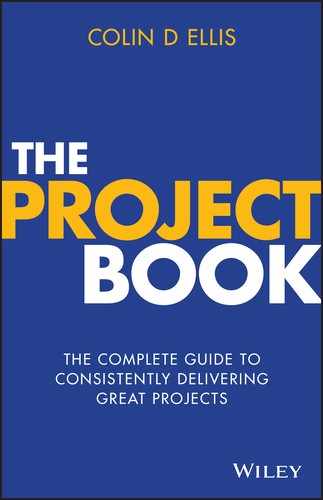CHAPTER 29
GET YOUR COMMUNICATION RIGHT
One of the biggest mistakes that project managers make is treating every person the same when it comes to communication. That’s not to say you don’t need to be consistent with your behaviours, but the language and medium you use should always be tailored to the individual(s).
One project manager asked me, ‘So does that mean I have to write four versions of the same report?’ My answer was, ‘No, you write one report but ensure there’s something in there to suit every personality within your audience’.
For example, there’s a myth circulating that all senior managers want to see is pictures. That may be true for some, but there are others out there who need to see the data behind that picture so they can be confident that the course of action being taken is the right one. Similarly, some senior managers will be primarily concerned with people. They will want you to demonstrate that you understand the nature of being human and the fears that change brings.
This is not about changing who you are, though. It’s about changing how you communicate to ensure your message is received and understood.
Mark Murphy, author of Hundred Percenters, suggests there are four communication styles we need to adopt in order to appeal to the different personality types and also to suit the situation we find ourselves in. For example, a senior manager usually predisposed to a more social conversation may require more data should an issue arise that they have no knowledge or experience with.
Mark’s four styles, along with my assessment of what project leaders need to do to tailor their approach to each, are:
- analytical — unemotional presentation of facts and figures. Have the data to back up the data you have, don’t um and ah or interrupt; use graphs and charts.
- intuitive — passionate, big-picture explanations. Draw diagrams, use demonstrative body language, talk about vision and goals, use stories.
- functional — direct, step-by-step and ordered. Be on time, focus on the process and give definitive answers to any questions.
- personal — diplomatic, emotional language, listening. Use their name (a lot) and demonstrate an understanding of their concerns.
Which of these communication styles are you most comfortable with? Your default will likely be the one most suited to your personality. Regardless of your approach, you should maintain eye contact at all times during face-to-face interactions, but don’t expect to get it back from everyone.
My default is the intuitive approach. I like to get passionate about the subject matter, and to articulate visions and goals. I tell stories to reinforce a point and like to write on whiteboards!
At different stages in my career I’ve led very different teams. In one organisation I led a team of largely analytical software developers, while my stakeholder group was made up of more functional, intuitive and personal line managers. After gathering feedback from them over the course of three months, I tailored my weekly update to ensure there was something for everyone. My executive summary allowed me to get passionate about our progress towards the goals. I then listed the top five tasks we had completed, followed by the five things we needed to complete next.
I spoke about team and stakeholder morale and about some of the team-building exercises we had done in that period. I finished off with some statistics around money spent, days to go, change requests in progress and issues resolved. In short, there was something in that update to keep everyone happy.
To build and maintain relationships with your team and stakeholders, it’s critical to use different communication approaches for each. If you don’t know how they like to receive their information, ask! If they’re not replying to your emails, you know you have work to do.
